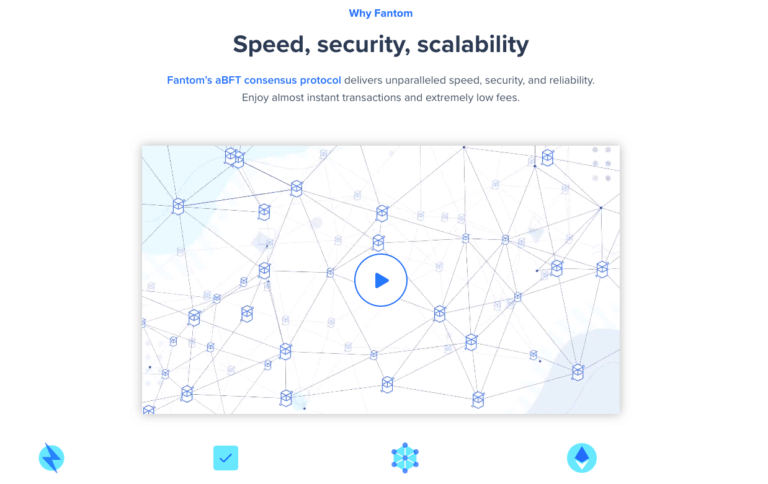Earlier today, Austin Barack, Principal (Venture & Liquid Investments) at CoinFund, explained why Fantom ($FTM) “should be on everyone’s list of key projects to watch” in 2022.
CoinFund, which was founded in 2015 and is headquartered in New York City and Miami, has “evolved a combined venture, liquid, and cryptonative strategy to grow with an ever changing ecosystem.” This “multi-strategy approach means CoinFund invests in trends early and at key junctions as blockchain technology converges with the mainstream world.”
Here is a little introduction by the Fantom team to this exciting crypto project:
“Fantom is a high-performance, scalable, and secure smart-contract platform. It is designed to overcome the limitations of previous generation blockchain platforms. Fantom is permissionless, decentralized, and open-source. Lachesis, its revolutionary aBFT consensus mechanism, allows Fantom to be much faster and cheaper than older technologies, yet extremely secure.“
Back in November, Crypto analyst and influencer “Guy,” who hosts the popular YouTube channel “Coin Bureau”, released a YouTube video in which he called Fantom’s medium sized market capitalization attractive for new investors and said the project’s fundamentals are “significantly stronger” than other cryptoassets on the market.
As reported by The Daily Hodl, Guy stated:
“FTM’s tokenomics are also seriously robust. All FTM coins allocated to Fantom’s early investors, founders and advisers finished vesting last November.“
Guy went on to explain the network’s minting process, saying that all new $FTM coins coming to the market are being generated as staking rewards. The host said the continued minting would introduce a “small amount of sell pressure” that would be easily offset by demand coming from the platform’s userbase and investors.
Coin Bureau’s host also noted that the Fantom Foundation offers a massive developer fund, with funds being vested to devs monthly over the course of one year.
According to Guy, more than half of Fantom’s circulating supply is being staked:
“And I’m sure most of it is being staked for more than the bare minimum. This reduction in available supply further increases FTM’s ability to fly.“
Well, earlier today (4 January 2021), Barack took to Twitter to extoll the virtues of Fantom:
He went on to say:
- “$FTM employs a DAG based (Directed Acyclic Graph) aBFT (Asynchronous Byzantine Fault Tolerant) consensus mechanism called Lachesis, secured by Proof of Stake – This allows for an extremely efficient, scalable, and low cost method of validating trxs”
- “Transactions are confirmed nearly instantly (within 1 second now, and soon faster). Finality is deterministic (vs. probabilistic as with Nakamoto Consensus used by ETH and BTC)”
- “In contrast to Fantom’s consensus mechanism, in Nakamoto Consensus finality of a trx is probabilistic and requires a certain # of confirmations to be assured of its correctness (eg. typically 35 trxs on ETH on 6 trxs on BTC)”
- “DAG based aBFT consensus is a significant innovation and allows for the type of time-to-finality, tps, and cost structure needed for the long term – 1000s of trx/second, trx costs in the cents, scalable to 1000s of nodes, 1 sec finality”
- “Opera Mainnet is the environment upon which decentralized applications can deploy on Fantom – Opera is Ethereum compatible. Any app built on $ETH and written in Solidity can deploy multichain to $FTM nearly immediately with minimal changes”
- “EVM compatibility is extremely important because it allows apps struggling with high gas fees and slow transaction times on ETH to deploy on Fantom as a pressure release valve mechanism, providing users with fast and cheap transactions”
- “Just as importantly, both users and developers can use the same tools making the experience seamless. This includes e.g. wallets (Metamask), dev tools (Truffle), etc”
- “Because of this seamless compatibility, a number of ETH based apps have focused on $FTM for their multi-chain deployment strategy including $SPELL, $YFI, $CRV, $ICE, $SUSHI, and many others”
- “EVM compatibility also allows synergies to flow in both directions. Native FTM apps can start on FTM for the incredible community and strong technology (fast, cheap, scalable), knowing that they can easily expand multichain to ETH soon after”
- “$FTM architecture allows for the creation of app specific chains beyond Opera, customized for particular use cases as demanded by the app, but all interoperable and secured by Lachesis”
- “The FVM is currently being developed (expected in 2022) which will improve scalability, cost, and finality on Fantom beyond the limitations set by the EVM, while still retaining EVM compatibility”
- “TVL growth from sub $100MM as recently as Q2 2021 to $6.9B today – Active address growth from 5K in Jan 2021 to over 1.5MM today – Over 150MM trxs on Fantom to-date”
He then talked about growth catalysts such as Fantom Foundation’s “Ecosystem Incentive Program”, Frog Nation, Team & Community, and Andre Cronje.
He concluded his amazing tweetstorm by talking about the L1 narrative:
- “At a $7.2B market cap, $FTM trades at a fraction of its peers’ market cap both on an absolute basis and as a ratio to TVL – $FTM also has one of the lowest priced tokens of major L1s which should help drive performance due to price/unit bias”
- “One of the reasons for L1 outperformance vs. $BTC is that they are productive assets (stake for yield, lend via DeFi, etc). $FTM POS staking yields of ~10% are extremely attractive”
Disclaimer
The views and opinions expressed by the author, or any people mentioned in this article, are for informational purposes only, and they do not constitute financial, investment, or other advice. Investing in or trading cryptoassets comes with a risk of financial loss.









